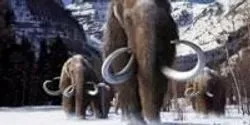News

The first comprehensive analysis of the woolly mammoth genome reveals extensive genetic changes that allowed mammoths to adapt to life in the arctic. Mammoth genes that differed from their counterparts in elephants played roles in skin and hair development, fat metabolism, insulin signaling and numerous other traits. Genes linked to physical traits such as skull shape, small ears and short tails were also identified. As a test of function, a mammoth gene involved in temperature sensation was resurrected in the laboratory and its protein product characterized.

Clemson University's Institute of Translational Genomics, led by geneticist Stephen Kresovich, has been awarded $6 million by Advanced Research Projects Agency-Energy as one of six projects seeking to accelerate the development of sustainable energy crops for the production of renewable transportation fuels.

Spiny lobsters practice “behavioral immunity” to create safe havens that prevent them from contracting a lethal disease in the wild, an important finding for the $50 million annual spiny lobster fishery in Florida, according to a new study co-authored by a University of Florida scientist.

Researchers at the U.S. Department of Energy’s (DOE) Princeton Plasma Physics Laboratory (PPPL) have developed a detailed model of the source of a puzzling limitation on fusion reactions. The findings, published in June in Physics of Plasmas, complete and confirm previous PPPL research and could lead to steps to overcome the barrier if the model proves consistent with experimental data. “We used to have correlation,” said physicist David Gates, first author of the paper. “Now we believe we have causation.” This work was supported by the DOE Office of Science.

Weizmann Institute scientists develop an “olfactory fingerprint” test that may do more than just identify individuals.

Researchers at the University of Georgia College of Engineering are helping NASA determine if a key rocket component can withstand the rigors of the next generation of space flight.

10 years after graduating, many have found financially solid and meaningful employment in the private sector, according to a new report from the American Institute of Physics.

A new recycling method developed by scientists at the Critical Materials Institute, a U.S. Department of Energy Innovation Hub led by the Ames Laboratory, recovers valuable rare-earth magnetic material from manufacturing waste and creates useful magnets out of it. Efficient waste-recovery methods for rare-earth metals are one way to reduce demand for these limited mined resources.













